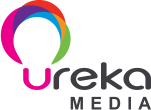


Make people SEE and REMEMBER the brand



Get people to UNDERSTAND and
WANT the brand



Change people's BEHAVIOR and
get them to CONVERT



Take care of people to CONVERT OFTEN and
ADVOCATE the brand
U News
5 Ways to Improve Digital Collaboration in the Workplace
Don't let tools become a distraction

Companies need to be strategic about the tools they use.
Getty Images
Digital collaboration is having a moment.
Between the rapid expansion of global businesses, the rise of the mighty remote worker and the uber-relevant trend of flexible work weeks, businesses worldwide are seeking the right technology to connect their teams and make sure they’re working together efficiently.
It’s easy to have a knee-jerk reaction and buy whatever technology is the flavor of the month, thinking that your team will naturally adopt to it perfectly. Before you do that, however, it’s important to ask the right questions, listen and collaborate with your team to find the best solution and create a strategy for how you are going to use it. Otherwise, it can turn into a big, fat waste of time-–a graveyard full of too many messages and good intentions, but not enough focused work.
Samantha Duffy, senior project manager at Avex, pointed out that simple mistakes are what usually cause problems when collaborating digitally. “Some of these include losing messages in Slack by sending too many, forgetting to tag or assign users in Trello so they don’t see the cards, forgetting to update settings on Google Drive so users can edit the document instead of just view…”
And, well, the list goes on.
If you refuse to become a casualty of digital collaboration tools, pay attention to these five tips that will help you win the game.
1. Be strategic from day 1
“Too many companies expect SaaS collaboration tools to magically solve their productivity and communication challenges,” said Seth Waite, chief strategy officer at RevUnit. “You can’t just buy a subscription and hope for the best. You have to implement them strategically and communicate how the organization should use them.“
Waite’s team found success with their collaborative tool by defining an “etiquette” for communication, which is relayed to each employee as they are onboarded into the company. This way, everyone is always aligned on how best to communicate through these tools.
2. Make sure the tools are actually helping
We’ve all been to horribly run weekly meetings at some point in our career. During these painful sessions, one or two vocal people dominate the whole conversation. According to Andres Angelani, CEO of Softvision, the same can happen on collaborative tools.
“You have to watch for strong individual personalities that can dominate these collaboration tools,” he says. “Make sure that when everyone is collaborating, there are opportunities for other voices and opinions and approaches. This will help staff grown and should also allow for individual accountability.”
Exactly. You need all your diverse voices to work together for the best result … so long as it doesn’t become a free-for-all.
3. Don’t let tools become a distraction
The sad fact about being constantly connected is that many of us feel that we have to respond to messages within 60 seconds. Collaborative tools are not helping this disease of ours, with the constant pinging of Slack.
“Making a judicious use of the snooze function is vital,” said Amanda Murray, digital marketing coordinator at seoplus+. “In our workplace, we’ve also instituted something called ‘Power Hour,’ a distraction-free hour of focus work with no email and no Slack, and it’s worked well so far. Like most things, it’s about finding a balance that works for your environment.”
4. Be efficient
According to Jennifer Kyriakakis, founder and vp of marketing at MATRIXX Software, you also have to be efficient and precise about sharing your documents. She suggests updating files via a document sharing folder like Dropbox, rather than sending multiple versions through messaging apps.
“A challenge is that people have used this platform as an extension of their hard drive rather than being used as an integrated collaboration tool,” she explained. “For example, instead of sharing a Dropbox link to a document over Slack, they will attach the actual document over Slack, meaning that latest version won’t automatically be updated on Dropbox causing inefficiency.”
The takeaway? Anticipate that people might get become confused and use old materials attached from an old message–-so make it easy for them to always choose the most current document.
5. Get your timing right
Another way to be efficient when working with a global organization is finding a rhythm on communication across multiple time zones, since not everyone is in the office at the same time.
Steve Kuhn, director of product management at Work & Co., has a method for this.
“When working across time zones, you have to establish a rhythm at the outset,” he said. “For example, with clients in Europe, we’ll often do a morning check-in first thing on Slack to discuss any issues that arose during their day, so we can set up our local teams to keep pushing forward on iterations that can be waiting for the client when they get in the next day. “
So before you go out and buy a subscription to the latest and greatest collaborative software, plan your attack. Paying attention to the small details will essentially give your staff a master class in the language of digital collaboration. When they become fluent, your business is one step closer to world domination.
Source: Adweek
Related Post
Recent Post


![[PERFORMANCE BASED ADS]APPLICATIONS OF ARTIFICIAL INTELLIGENCE IN MARKETING DATA ANALYSIS](https://urekamedia.com/uploads/uploads_image/20180418/20180418212416_61085.jpg)

![[ALL ABOUT PROGRAMMATIC] PART 9: TARGETING - A SIGNIFICANT BREAKTHROUGH OF PROGRAMMATIC WITH USER DATA](https://urekamedia.com/uploads/data/uploaded/images/photo_news/800x800/news_20160831041800/programmatic-urekamedia-mediaeyes-dsp-part9-targeting-thumbnail1.png)






